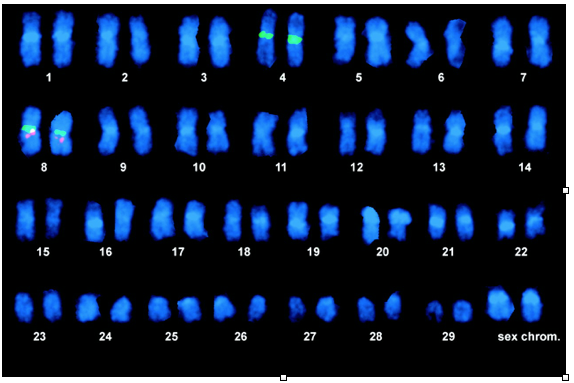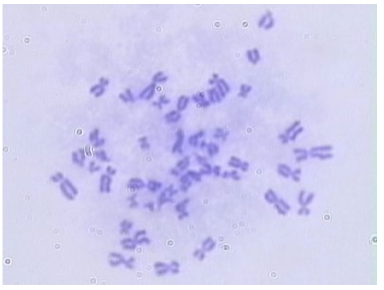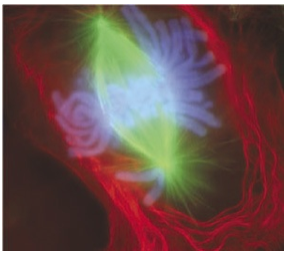Free Video River Fly Fishing Course
20+ instructional videos, shot in 4k. Free to all new and existing newsletter subscribers – Click Here!

Trout have similar genetic and chromosome make-up as humans. All human and trout genetic information is held on chromosomes. Each chromosome is a cord made up of two threads lying side by side as in an electrical cable. The thread is like a long strip of paper upon which is printed a long single line of instructions about how to make an individual, whether trout or human. The two threads of each chromosome have exactly the same message; one thread is a duplicate copy of the other. This single continuous line of instruction is divided into chapters which are called genes, with each gene giving instructions about one character of the person, such as hair colour in humans or number of spots on the trout’s skin. There may be a thousand genes on a single chromosome, so each chromosome is like a manual of instructions about how to make different physical characteristics of an individual, whether trout or human. I am not going to describe here how this instruction is written, nor how it is put into production to produce a human body, but both processes are well understood.
Below is a picture of a trout’s chromosomes. All these chromosomes came from ones single cell of the trout; there are probably more than a trillion (a million millions) cells in the trout that I caught on Friday. They have been magnified many thousand times and then stained with a fluorescent dye to make this picture. In the actual cell of the trout, they were not arranged neatly like this but all jumbled together. It is like taking 60 socks out of a washing machine and then arranging them into 30 pairs. Each chromosome can be identified by its size, shape and some staining characteristics (which is not shown here). One chromosome of each pair came from that individual’s mother and the other chromosome of the pair came from dad, so the two members of the pair do not have identical instructions about hair colour but they do both have instructions for hair colour at one specific dot along the length of this chromosome. The last pair of chromosomes in the picture is labelled the sex chromosomes because it is those chromosomes that determine whether the individual is male or female. A female has two identical chromosomes which are called the X chromosomes; female with two X chromosomes are said to be XX. In a male, the two sex chromosomes are not identical, one being much smaller than the other. The small chromosome is called the Y chromosome so a male is XY. Only males have a Y chromosome, but they also have a single X chromosome.

How to make an egg or a sperm.
When an egg or a sperm is made, one chromosome of each pair goes into the egg or sperm so that the egg or sperm has only 30 chromosomes, not 30 pairs of chromosomes. One or other of the sex chromosomes goes into each egg or sperm. The egg comes from the female whose cells always have two XX chromosomes and no Y chromosome. Therefore all her eggs contain one X chromosome. The male has one X chromosome and one Y chromosome and therefore half the sperm cells have an X chromosome and half have a Y chromosome. A baby starts life when a single sperm fuses with a single egg and restores the chromosome number to 30 pairs of chromosomes. The sex of the baby they produce is therefore dependent on the sperm; if the one sperm that fertilises the egg carries an X chromosome the baby will be female; if it carries a Y chromosome the baby will be a male. When I look at the picture of the trout’s chromosomes, I think she is a female because the two sex chromosomes look the same. The Y chromosome is tiny (in humans anyway) and is about the size of one of the number 29 chromosomes in the picture.
The merging of the 30 single chromosomes into 30 pairs of chromosomes in the first cell of the baby trout is the starting point for making that individual trout. The trout grows by that one cell dividing and becoming two cells, and then dividing again to make 4, and the 4 then dividing to make 8 and so on. These divisions are not like the ones I described above which only occur in the testes and ovaries. In all other cells divisions, instead of one of each pair going into the sperm or egg, an exact copy of every chromosome is made and the copied chromosomes go into the new cell. Therefore every cell in the body, except for the eggs and sperm, has identical chromosomes and therefore genetic information.
Below is a picture of human chromosomes, each of which has made an exact copy of itself, with the two copies still joined together.

When the cell divides these two identical strands of each cell are pulled apart with one part going into one of the new cells and the other part going into the other new cell.
Here is a picture of that happening.

The red bits are the skin of the cell, the green bits are the traction engines pulling the chromosomes apart and the blue bits are the pairs of chromosomes being drawn apart.
What is a triploid and why are farmed trout triploids?
Normal cells are diploid, meaning a pair of each of the 30 chromosomes, as shown in the first picture. Triploid means having a triplet of each of the 30 chromosomes. The chromosomes of the trout in the picture are from a normal wild trout with 30 sets of two chromosomes (it has60 chromosomes). It is diploid. A triploid trout would have three chromosomes in each of the 30 set, ie it would have 90 chromosomes in all. Triploidy is a major genetic abnormality. Some human foetuses are conceived as triploids but all of them die in the uterus before about 3 months pregnancy and result in a miscarriage; there are no human surviving triploids.
Trout breeders and scientists have worried about taking and breeding wild trout and stocking from farmed “wild” trout. They lose their instincts such as catching prey and prey avoidance and then compete with truly wild trout for habitat. Farmed trout survive to adolescence much better than wild trout because they lack prey and so the concept of survival of the fittest and natural selection of the fittest is disturbed.
The main worry about genetic modification is that weakened genes might be introduced into the trout population. It was decided that if infertile trout could be bred then they could not interbreed with wild trout. Scientist found they could produce eggs with a pair of each of the mother’s chromosomes, rather than with only one of each pair, which is what should happen in eggs. These eggs had 60 chromosomes, pairs of 30 chromosomes, whereas normal trout eggs only have 30. They did this by increasing the pressure on the developing to well above atmospheric pressure at a critical time of their development. Since the scientists did this to eggs, not sperm, they knew that each egg had two XX chromosomes. These eggs could be fertilised by sperm. The sperm added another single set of chromosomes. The babies therefore had 90 chromosomes, ie they were triploid with 30 sets of 3 chromosomes. Half the babies had a Y chromosome from the sperm and half had another X chromosome. Half were XXY and half XXX. Having three sets of chromosomes is a genetic abnormality and these fish were infertile as adults and therefore it was presumed they could not breed with the wild fish. Despite the genetic anomaly these fish looked and behaved very like wild trout.
Public concerns persisted about these fish. The main concern was about their sexual behaviour. The females were not interesting in breeding in the wild and did not migrate up to the spawning areas. However, the males did seem interested and did migrate to spawning areas. They may not have been able to fertilise the eggs but they caused concerns by possibly interfering with breeding behaviour. There was also a slight concern that it was possible that the sterility was not absolute.
The next development was to breed all female triploids that would both be infertile and not interested in any spawning behaviour.
What makes an XY turn into a male and an XX turn into a female?
Scientists have known that the genitals of human and animal foetuses look identical for the first third of pregnancy. The also knew that if one cuts out the testes of a male fetus, that the fetus grows up looking and behaving like a girl. They gave drugs that stopped male hormones working to male animal foetuses and found that these genetic males looked exactly like normal females, both on the outside and inside. They had ovaries, uterus and a vagina. Similar experiments were done with genetically female foetuses. They were given male hormones and they developed into males, both in internal and external appearance and behaviour. They had a penis and they mated with normal females. These manipulations do not change the number of chromosomes in the offspring
The trout breeders took this up. They treated the developing eggs of normal wild trout with male hormones and produced fish that all looked and behaved like males. They all produced sperm even though half of them were genetically female. The “sperm” of the treated genetic females had 30 chromosomes including an X chromosome. The sperm of the treated genetic male trout had 30 chromosomes but half the sperm of the male fish had a Y chromosome and half had an X chromosome. The breeders then destroyed all the hormonally treated genetic male fish so that they were left only with the hormonally treated genetic female fish. These fish all had 30 chromosomes and all had one X chromosome. They are called “father” fish because the father offspring but are genetically female; all their sperm contain an X chromosome and none has a Y chromosome.
Finally, they then induced the mature triploid female fish to produce eggs. They produce eggs with 60 chromosomes including two X sex chromosomes. When these XX eggs are fertilised with all X containing sperm then the result is an offspring with 90 chromosomes including XXX. This is an infertile female who has no interest in breeding or even interfering with it. This is the all-female triploid stock.
Free Video River Fly Fishing Course
20+ instructional videos, shot in 4k. Free to all new and existing newsletter subscribers – Click Here!



